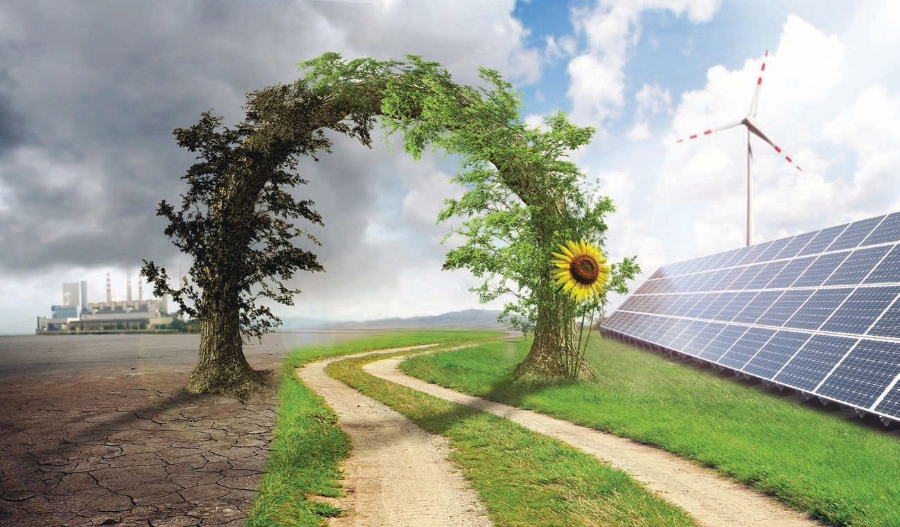Future of Green Power
In the wake of environmental challenges and the increasing energy demand, the world is turning its attention towards sustainable and eco-friendly solutions. One of the key players in this movement is the concept of “Green Power.” Electricity produced from ecologically friendly and renewable resources is referred to as “green power,” and it offers a competitive option to traditional fossil fuels.
Green power technology adoption has risen due to the pressing need to combat climate change and reduce carbon emissions. Unlike traditional energy sources, such as coal and oil, green power harnesses the Earth’s natural resources without depleting them. This introduction explores the diverse aspects of green power, its importance, and the role it plays in shaping a more sustainable future.
Need for Green Power
Adopting green power is more important than ever in light of the growing environmental problems and the ongoing threat posed by climate change. This imperative stems from the growing recognition that transitioning to sustainable and renewable energy sources is not just a choice but a fundamental necessity for securing a resilient and harmonious future.
Addressing Climate Change
At the forefront of the need for green power is the imperative to combat climate change. Traditional energy sources, primarily reliant on fossil fuels, release substantial amounts of greenhouse gases into the atmosphere, contributing to global warming. Green power, derived from renewable sources, offers a clean and low-carbon alternative, mitigating the adverse impacts of climate change and fostering a healthier planet.
Reducing Environmental Impact
The extraction and production of conventional energy frequently results in habitat destruction, resource depletion, and contamination of the air and water. The adoption of green power technologies minimizes these negative impacts, preserving ecosystems, safeguarding biodiversity, and ensuring the sustainable use of natural resources.
Energy Security and Independence
The need for green power is intricately linked to the goal of achieving energy security. Green power sources, such as solar, wind, and hydropower, provide a diversified energy mix that reduces dependency on finite and geopolitically sensitive fossil fuels. Because of this variety, countries are less susceptible to supply disruptions and geopolitical unrest, improving energy security.
Health and Well-being
The combustion of fossil fuels not only contributes to climate change but also results in air pollution, impacting human health. Green power technologies, free from harmful emissions, contribute to cleaner air and improved public health. This shift towards cleaner energy sources aligns with the fundamental need to prioritize the well-being of present and future generations.
Role of Green Power and its Advantages
In the face of pressing environmental concerns and escalating energy demands, the spotlight has shifted towards a transformative energy solution-Green Power. This paradigm shift, marked by a departure from conventional fossil fuels, holds profound importance in shaping a sustainable and resilient global energy landscape.
Redefined Significance of Green Power
Green power, derived from renewable sources such as solar, wind, hydroelectric, geothermal, and biomass, goes beyond a mere alternative. It emerges as a fundamental force driving positive change, contributing to environmental preservation, resource sustainability, and bolstering energy security.
Elevating Environmental Impact
At the core of the redefined importance lies the capacity of green power to drastically reduce the ecological footprint associated with traditional energy sources. By minimizing or eliminating greenhouse gas emissions, it emerges as a potent ally in the battle against climate change, offering tangible benefits to ecosystems worldwide.
Technological Prowess
The dynamic landscape of green power is marked by constant technological evolution. Continuous innovations in solar panels, wind turbines, and energy storage solutions not only enhance efficiency but also contribute to the affordability and scalability of these sustainable technologies.
Global Synergy and Policies
Recognizing the imperative to embrace sustainable energy solutions, countries worldwide are unifying efforts through international agreements and policies. Initiatives like the Paris Agreement serve as catalysts, fostering a collaborative commitment towards widespread adoption of green power and the realization of a low-carbon future.
Policies and incentives to promote the development of green power in India
National Solar Mission (NSM):
Launched in 2010, the NSM aims to promote the development of solar energy in India. It sets ambitious targets for solar capacity addition, encourages research and development, and provides financial incentives and subsidies for solar power projects.
Pradhan Mantri Kisan Urja Suraksha Evam Utthan Mahabhiyan (PM-KUSUM):
This scheme, launched in 2019, focuses on promoting solar energy in the agriculture sector. It encourages the installation of solar pumps, solarization of existing grid-connected pumps, and setting up of solar power projects on barren/fallow lands.
Wind Power Policy:
Various states in India have their wind power policies that provide incentives and support for the development of wind energy projects. These policies often include feed-in tariffs, tax benefits, and other financial incentives.
Renewable Purchase Obligation (RPO):
The RPO is a regulatory mechanism that mandates a certain percentage of electricity consumption to come from renewable sources. This policy encourages power utilities to invest in and procure a specified share of their energy from green power projects.
Atal Jyoti Yojana (AJAY):
Launched in 2016, AJAY aims to promote solar street lighting systems in rural areas. The scheme provides financial support to install solar streetlights, reducing dependence on conventional energy sources in remote locations.
FAME India (Faster Adoption and Manufacturing of Hybrid and Electric Vehicles):
FAME India launched to promote electric mobility, includes incentives for electric vehicles (EVs) and charging infrastructure. Promoting EVs contributes to a reduction in fossil fuel consumption.
Smart Cities Mission:
The Smart Cities Mission includes provisions for promoting sustainable and green practices, including the development of green infrastructure, energy-efficient buildings, and the integration of renewable energy sources within smart city projects.
The compelling need for green power is driven by a collective responsibility to safeguard the planet and ensure a sustainable future. As nations, industries, and individuals increasingly recognize the benefits of transitioning to renewable energy sources, the imperative for green power becomes not just an environmental aspiration but a strategic necessity for a resilient, secure, and prosperous world.
Source

